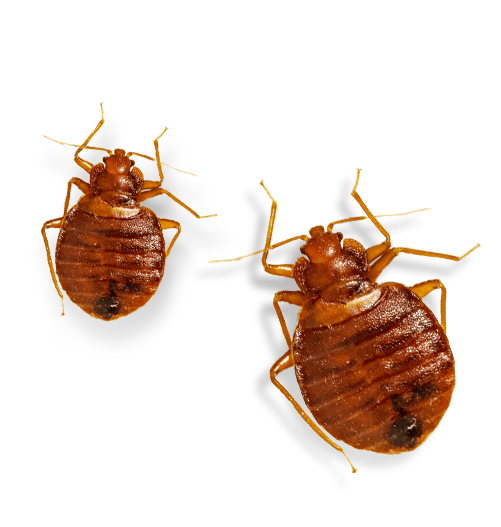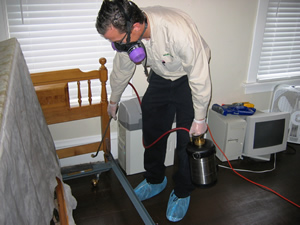Local Bed Bug Exterminator: DC Heat Treatment Providers Available
Local Bed Bug Exterminator: DC Heat Treatment Providers Available
Blog Article
Discovering the Scientific Research Behind Bed Pest Heat Treatments as a Sustainable Parasite Administration Approach
In the realm of parasite management, the quest for efficient and sustainable remedies remains a consistent search. One such approach that has actually acquired traction in recent years is making use of heat treatments to combat bed pest infestations. By utilizing the scientific research behind thermal death factors for these consistent insects, warm treatments provide a promising alternative to typical chemical-based approaches. The details of just how warm properly gets rid of bed insects and the broader implications for sustainable parasite management methods make this a topic worth discovering further.
Bed Bug Warmth Treatment Process

Thermal Fatality Point for Bed Insects
Exposing bed bugs to elevated temperature levels beyond their thermal resistance variety is essential for achieving effective eradication in warm treatment procedures. By getting to and preserving temperatures over the thermal death factor for bed insects, bug management professionals can make certain detailed removal of bed bug populations, consisting of hard-to-reach areas where chemical treatments may be much less reliable. Recognizing the thermal fatality point for bed insects is necessary for executing successful heat therapy methods and accomplishing sustainable parasite management results.
Advantages of Heat Treatments
Having actually established the essential thermal death factor for bed pests, it is critical to now discover the substantial benefits that warmth therapies use in successfully getting rid of these resilient bugs. One of the primary advantages is that heat can pass through deep into cracks and holes where bed bugs hide, guaranteeing that even the most hard-to-reach areas are heated to dangerous temperatures.
Additionally, warmth treatments are non-toxic and eco-friendly, making them a sustainable insect management approach. Unlike chemical pesticides, heat therapies do not leave harmful deposits that can pose dangers to human wellness or the environment. This element is particularly vital in sensitive environments such as healthcare facilities, institutions, and suburbs where chemical use may not be desirable.
Additionally, heat treatments have a high success rate in removing bed bug infestations in a solitary therapy, reducing the demand for multiple check outs and lessening disruption to occupants. This performance not just saves money and time yet additionally supplies peace of mind to those dealing with bed pest problems.
Performance of Warmth Therapy

Heat treatments have the added advantage of killing bed click to investigate insect eggs, which are frequently resistant to conventional chemical therapies. Overall, the efficiency of warmth therapies in eliminating bed bug infestations makes them a dependable and lasting insect administration method.
Lasting Bug Management Benefits
Applying lasting bug administration methods uses lasting benefits for both the environment and public health. By using approaches such as warm treatments for insect control, we can lower the reliance on dangerous chemical pesticides that can have damaging effects on communities and human health - DC exterminator. Sustainable bug monitoring strategies aid in preserving biodiversity by targeting certain pests without hurting non-target microorganisms, therefore keeping a well balanced ecosystem
Moreover, lasting insect monitoring practices check my source contribute to the overall health and well-being of the public. By lessening direct exposure to hazardous chemicals utilized in conventional parasite control approaches, warmth treatments give a much safer choice for pest management in property, industrial, and public areas. This decrease in chemical usage also aids in preventing pesticide deposits from polluting water, soil, and air, protecting ecological quality.
Verdict
In conclusion, bed insect warmth therapies have been shown to be a sustainable and effective insect monitoring approach. The thermal death point for bed insects makes them prone to warmth therapies, which have various advantages over conventional chemical therapies. The effectiveness of heat treatments in getting rid of bed insect invasions while decreasing environmental effect highlights the possibility of this technique as a sustainable remedy for parasite control.
The bed insect heat treatment process includes raising the temperature within plagued areas to a level that efficiently removes bed insects and their eggs. By getting to and maintaining temperature levels over the thermal death factor for bed insects, pest administration specialists can make certain detailed removal of bed bug populaces, consisting of hard-to-reach locations where chemical therapies might be much less efficient. One of the main benefits is that warmth can pass through deep into crevices and cracks where bed pests conceal, making sure that also the most hard-to-reach locations are warmed to dangerous temperatures. Unlike chemical therapies that may leave behind resistant populations, warmth therapies use a environmentally friendly and non-toxic service that can permeate deep into furnishings, wall surfaces, and other hard-to-reach areas where bed bugs hide.
The thermal death factor for bed pests makes them susceptible to warm treatments, which have useful link many advantages over standard chemical treatments.
Report this page